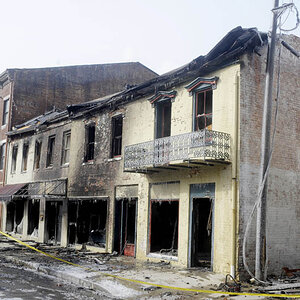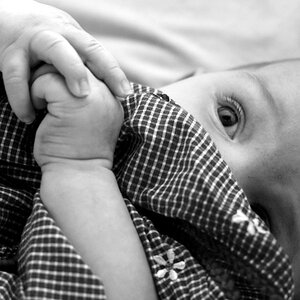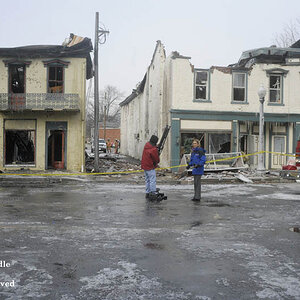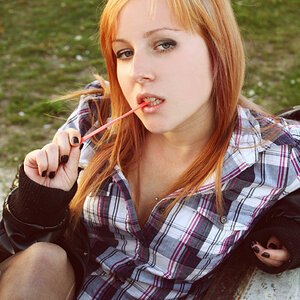Antithesis
No longer a newbie, moving up!
- Joined
- Aug 24, 2007
- Messages
- 1,340
- Reaction score
- 16
- Location
- Caribbean
- Website
- www.epanderson.com
- Can others edit my Photos
- Photos OK to edit
I've been waiting for a camera like the D600 to come along for a long time. Small, compact and sports an amazing, full-frame sensor. I know it's been out for some time now, but I've recently been renting a pair of them for weddings, etc., and have really been enjoying them. I figured it's been a while since I've posted on here, so I thought I'd post my thoughts for anyone who is on the fence. I've been using the cameras professionally, putting anywhere from 500-3000 photos on them per shoot. My background is a photo editor for a post-processing house, so I get to look at images from pretty much any and all current cameras, so I have a frame of reference for Image Quality (from d7000's all the way up to Phase One MF backs). That's where I'll start:
Image Quality (IQ):
I'm sure I'm beating a dead horse here, but the IQ of these 'consumer' cameras is really just astounding. The last generation of Nikon full frame sensors seemed to do weird things with some tones of blue/purple, and always seemed to render a bit of a lifeless image that required a bit of extra oomph in Lightroom (mainly the D3 and D700). It's only really noticeable when compared to the 5D mk2/3 (basically the wedding industry 'standard' cameras), which I consider to be the benchmark for 'perfect' color. The D600 edits very similar to the Canon's, which is a good thing. Skin tones look realistic, rich and gorgeous.
As far as Dynamic Range and depth is concerned, this is one of the best cameras I've had the pleasure of working with. Many modern cameras do very well here, but being able to pull back the highlights or bring up the shadows in seemingly impossible amounts is just amazing. Highlights that look mostly blown out can often be brought back down with little to no banding. I love it.
FYI, I am referencing RAW quality. Jpeg's aren't terrible off this camera when processed in Lightroom 4 or later, but you should never, ever be shooting Jpeg (unless it's an absolute pinch, but you knew that )
)
High ISO:
I typically like to shoot mostly natural light whenever possible, only resorting to flash when there is literally no light sources. I was able to comfortably shoot up 4000-6400 ISO, and not really even feel like noise reduction is necessary. I'm sure the camera could be pushed farther, but I rarely find myself needing to go over 3200 ISO at >f/2 unless it's time to bust out the flash. I like the look of a bit of grain, but such a densely pixelated sensor gives a pretty smooth, film-like grain that is not as obtrusive (and even pleasing).
Handling:
The D600 is definitely small if you are used to any pro-level body. I like its size for using small, fast primes, which is typically what is on my camera 95% of the time. I really enjoy pairing the body with the new 50 f1.8 AF-S, which I consider to be on the best autofocus 50's I've used (other than the 50 1.2L). The camera feels tiny when attached to a big telephoto like a 70-200, and can feel woefully unbalanced. If you like big zooms like the 24-70, this is probably not the best camera for it in terms of ergonomics.
The autofocus is very, very good. I shot a Canon 5D mk2 for a while, and a mk1 before that, and it's just a joy to have the camera actually focus in very little light. On my last wedding, I was able to focus on people I could barely see through the viewfinder. It struggles with certain colors (blues in particular), but is usually spot on. I like to use the center point and the AF-ON button (actually labeled something else, can't remember what it was, but it's in the same spot). Focusing and repositioning really helped my keeper rate by an order of magnitude... highly recommended, I started doing it a couple years ago and will never go back to picking af-points.
The deal breakers for me are the teeny, tiny little buffer and the enormous file size. The buffer just feels soooo small, and seems to unload painfully slow. You have to be very, very conscious about "machine-gunning", or you'll end up missing a lot of important shots. I've tried to slow down my shooting in general, but sometimes it's necessary to fire off a lot of images. The buffer fills in fifteen shots (under three seconds if you are really railing on it) and the shooting rate goes down to about a shot per second for several seconds or more. It is incredibly frustrating. It feels like an eternity when the bride is staring at you, wondering why the **** you aren't shooting. I was planning on buying two D600's and sticking with them until they fall apart, but after several shoots, I really think the small buffer is going to bite me some day (i.e. miss the kiss or something else important).
And then there is the file size. This is more of an I'm-a-cheap-bastard gripe, but I shot 128gb of data in one wedding while shooting conservatively, even with the buffer preventing an additional 10-15% of my shots. Memory cards are cheap, that's not the issue, but two weddings is quarter of a terabyte. That is just cumbersome, even with the low cost of memory. I'd need a full raid tower after a year, constantly swapping out drives. Anyways, /endrant. The concern of storage space and burning through a dozen terabytes of storage is the main reason I've never considered the D800 either.
Conclusion:
I really love the D600. It's a great camera, though less so for professional use (which I know is not its intended purpose). I'll probably stick with a D700 as a main body until I can afford a D4, and use the a D600 as a backup body and for fine-art or studio use. Basically, where the buffer is less of a concern, and burning through well over a 100gb of memory won't be an issue. For an enthusiast-level camera, I don't think there is (or has been) a better camera. It is basically perfect. Images can be seen here, for those interested: Tracy & Dale?s Wedding ? June, 15th 2013 ? Vieques, PR | epandrsn
Hopefully I helped at least someone in their decision making process :thumbup:
Image Quality (IQ):
I'm sure I'm beating a dead horse here, but the IQ of these 'consumer' cameras is really just astounding. The last generation of Nikon full frame sensors seemed to do weird things with some tones of blue/purple, and always seemed to render a bit of a lifeless image that required a bit of extra oomph in Lightroom (mainly the D3 and D700). It's only really noticeable when compared to the 5D mk2/3 (basically the wedding industry 'standard' cameras), which I consider to be the benchmark for 'perfect' color. The D600 edits very similar to the Canon's, which is a good thing. Skin tones look realistic, rich and gorgeous.
As far as Dynamic Range and depth is concerned, this is one of the best cameras I've had the pleasure of working with. Many modern cameras do very well here, but being able to pull back the highlights or bring up the shadows in seemingly impossible amounts is just amazing. Highlights that look mostly blown out can often be brought back down with little to no banding. I love it.
FYI, I am referencing RAW quality. Jpeg's aren't terrible off this camera when processed in Lightroom 4 or later, but you should never, ever be shooting Jpeg (unless it's an absolute pinch, but you knew that
High ISO:
I typically like to shoot mostly natural light whenever possible, only resorting to flash when there is literally no light sources. I was able to comfortably shoot up 4000-6400 ISO, and not really even feel like noise reduction is necessary. I'm sure the camera could be pushed farther, but I rarely find myself needing to go over 3200 ISO at >f/2 unless it's time to bust out the flash. I like the look of a bit of grain, but such a densely pixelated sensor gives a pretty smooth, film-like grain that is not as obtrusive (and even pleasing).
Handling:
The D600 is definitely small if you are used to any pro-level body. I like its size for using small, fast primes, which is typically what is on my camera 95% of the time. I really enjoy pairing the body with the new 50 f1.8 AF-S, which I consider to be on the best autofocus 50's I've used (other than the 50 1.2L). The camera feels tiny when attached to a big telephoto like a 70-200, and can feel woefully unbalanced. If you like big zooms like the 24-70, this is probably not the best camera for it in terms of ergonomics.
The autofocus is very, very good. I shot a Canon 5D mk2 for a while, and a mk1 before that, and it's just a joy to have the camera actually focus in very little light. On my last wedding, I was able to focus on people I could barely see through the viewfinder. It struggles with certain colors (blues in particular), but is usually spot on. I like to use the center point and the AF-ON button (actually labeled something else, can't remember what it was, but it's in the same spot). Focusing and repositioning really helped my keeper rate by an order of magnitude... highly recommended, I started doing it a couple years ago and will never go back to picking af-points.
The deal breakers for me are the teeny, tiny little buffer and the enormous file size. The buffer just feels soooo small, and seems to unload painfully slow. You have to be very, very conscious about "machine-gunning", or you'll end up missing a lot of important shots. I've tried to slow down my shooting in general, but sometimes it's necessary to fire off a lot of images. The buffer fills in fifteen shots (under three seconds if you are really railing on it) and the shooting rate goes down to about a shot per second for several seconds or more. It is incredibly frustrating. It feels like an eternity when the bride is staring at you, wondering why the **** you aren't shooting. I was planning on buying two D600's and sticking with them until they fall apart, but after several shoots, I really think the small buffer is going to bite me some day (i.e. miss the kiss or something else important).
And then there is the file size. This is more of an I'm-a-cheap-bastard gripe, but I shot 128gb of data in one wedding while shooting conservatively, even with the buffer preventing an additional 10-15% of my shots. Memory cards are cheap, that's not the issue, but two weddings is quarter of a terabyte. That is just cumbersome, even with the low cost of memory. I'd need a full raid tower after a year, constantly swapping out drives. Anyways, /endrant. The concern of storage space and burning through a dozen terabytes of storage is the main reason I've never considered the D800 either.
Conclusion:
I really love the D600. It's a great camera, though less so for professional use (which I know is not its intended purpose). I'll probably stick with a D700 as a main body until I can afford a D4, and use the a D600 as a backup body and for fine-art or studio use. Basically, where the buffer is less of a concern, and burning through well over a 100gb of memory won't be an issue. For an enthusiast-level camera, I don't think there is (or has been) a better camera. It is basically perfect. Images can be seen here, for those interested: Tracy & Dale?s Wedding ? June, 15th 2013 ? Vieques, PR | epandrsn
Hopefully I helped at least someone in their decision making process :thumbup:



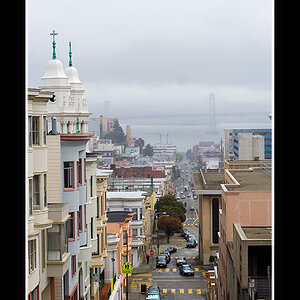
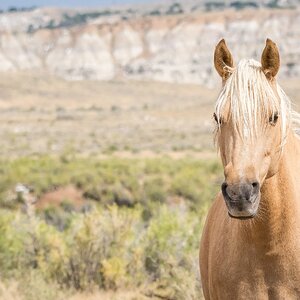
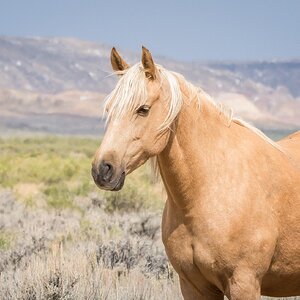
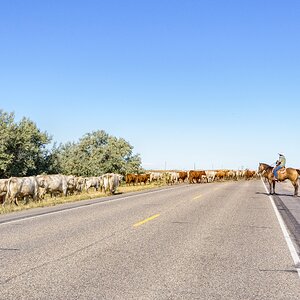
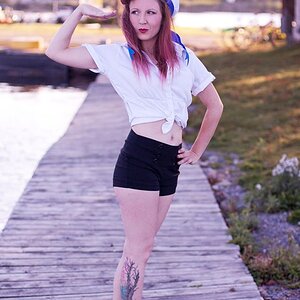
![[No title]](/data/xfmg/thumbnail/41/41786-0de67cacf7270937b4833f67d003f9c2.jpg?1619739891)
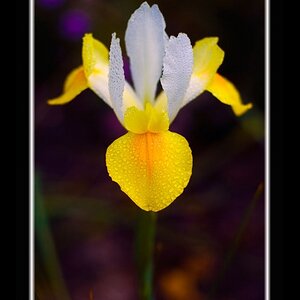
![[No title]](/data/xfmg/thumbnail/33/33359-a5cf76b8e843e82b3831650af6dfa6b3.jpg?1619735923)
